Deltas are among the most magnificent geographical landforms. Although they hardly ever come up in conversations, they occupy an important place in earth’s ecology. You might have never given much thought to what they are, or asked questions like “How are deltas formed”? Still, there’s a chance that you have seen one in pictures or you may even live near one at the moment.
Deltas typically form at the point where rivers flow into a large body of water such as the ocean or a lake. There are several types of deltas. Each one forms in different ways. In this article, we’ll explain the formation of the different types of deltas and their significance.
What Are Deltas
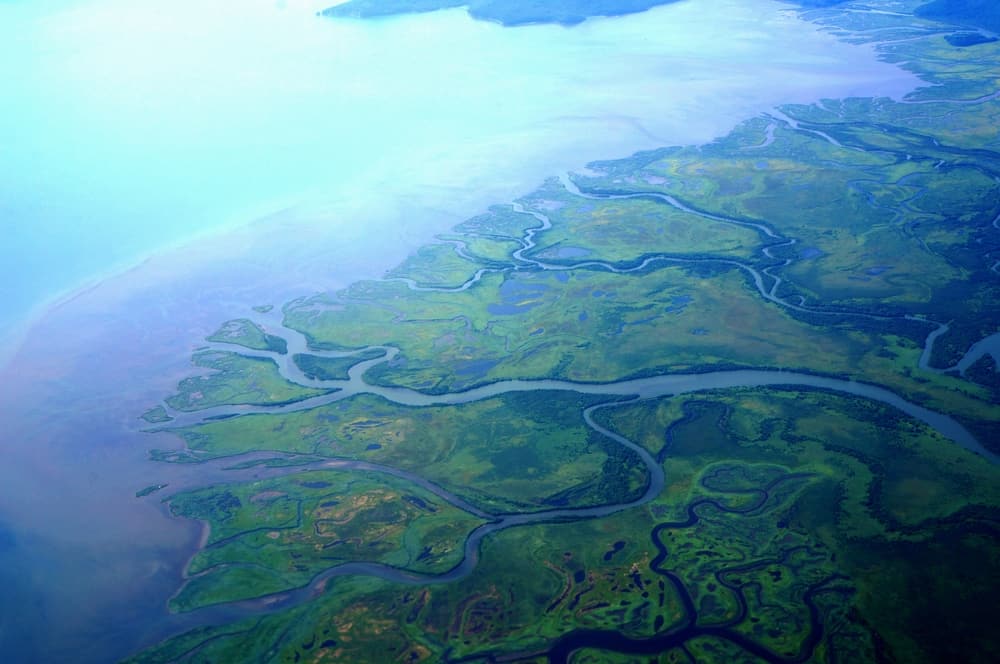
Deltas are formed with the gradual deposition of sediments as rivers slow where they meet larger bodies of water.
©URRaL/Shutterstock.com
To really understand how deltas are formed, you’ll have to know what they are, to begin with. A delta is a wetland that forms at the point where a river empties its water and all the sediments it carries into a large body of water. The new body of water is typically an ocean or lake. But it could also be another river or even land.
How Are Deltas Formed?
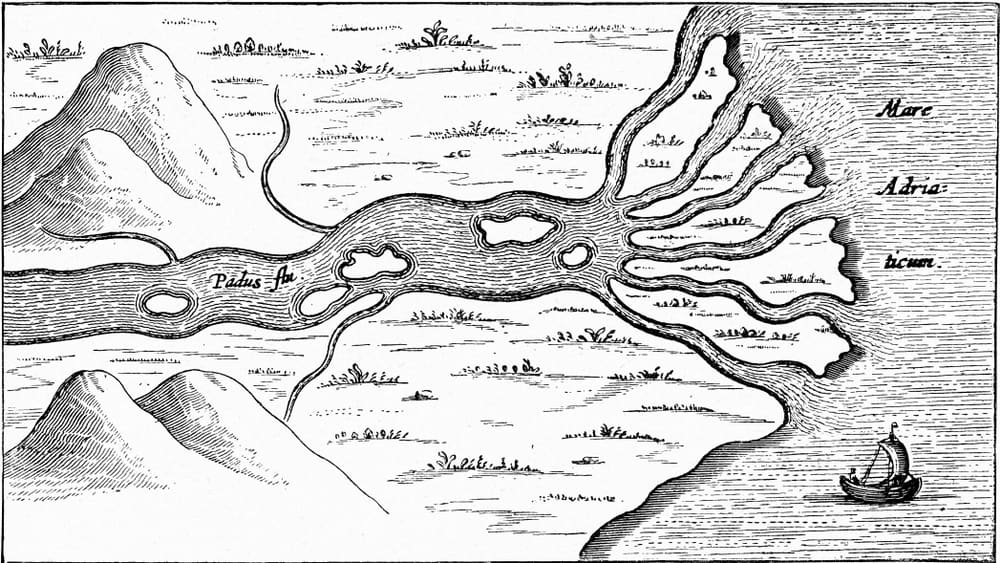
Delta formation at the mouth of the Po in the Adriatic Sea, vintage engraved illustration. From the Universe and Humanity, 1910.
©Morphart Creation/Shutterstock.com
The formation of deltas is a slow and steady process that takes several years to occur. Generally, the main factor that causes the delta to fall is the gradual deposition of sediments as a river slows down at the point where it enters a larger body of water. Of course, the real process isn’t as simple as that. it involves a combination of factors as highlihgted below.
River Flows from High to Low Elevation
To begin with, the formation of deltas is based on the principle that a river typically flows from a high elevation area to a low elevation area where it eventually flows into a larger body of water (typically the ocean or a lake). As the water reaches this region of low elevation, it will gradually slow down.
During the river’s transit towards the low elevation area, it must have picked up a lot of sediments from the high elevation area. Since the water is still traveling fast at this stage, all the sediments and debris of various sizes that the river carries remain suspended in the water. The bulk of these sediments will remain in suspension as long as the river maintains its velocity.
Elevation Drops & River Slows Down
However, as the river nears the end of its course and elevation drops, the velocity of the water drops as well. This causes the sediments and solid materials that it was carrying to fall to the river bottom and get deposited by the now slow-moving current.
Sediments Deposition
The low velocity allows the gradual build-up of sand, mud, silt, and gravel in the river channel. At the onset, the sediment build-up does not have much effect. However, as more sediments are brought in, the layer of settling sediment forms an area of land at the point where the river flows into the larger water body. The tiny islands break up the river flow from a single channel to several smaller channels known as distributors.
We call this entire area the deltaic lobe and it includes the entire network of smaller shallow channels that branch off from the main channel of water. The sediments in the deltaic lobe are typically graded. The heavier, coarse materials settle first (as the water slows down) while the finer materials (silt or alluvium) go further, closer to the river mouth.
Why Are Deltas Important?
Deltas are ecologically significant landforms that serve many purposes. The formation of a delta as a river flows into a larger body of water reduces the impact of pollution in the larger body of water. The network of distributaries and alluvium deposits formed at the deltaic lobe acts like a sort of filter. This prevents sediments from getting into the lake or ocean that the water flows into.
Deltas are nutrient-rich which makes them very valuable to humans for agricultural purposes. Deltas are also ecologically diverse habitats that serve as a home to plants like lilies and hibiscus. They’re home to numerous animals that dwell in the shallow waters as well. This includes fish species, oysters, crustaceans and insects. Even some apex predators like bears find the delta ecosystem suitable for them to hunt for food.
Do All Rivers Form Deltas?
It is interesting to note that not all rivers form deltas. For deltas to form, certain elements have to be present. The most important requirement is that the water slows down enough to allow the deposition of the sediments it is carrying. This is unlikely to occur if the river is fast flowing. The Ok Tedi River in Papua, New Guinea is an example of a fast-flowing river that did not form a delta as it flowed into the Fly River.
Similarly, a delta may not be formed if the body of water the river flows into is characterized by powerful waves. This way, even if the incoming river slows down enough to deposit sediments, they will all be washed away by strong waves of the ocean or river they’re flowing into as soon as they’re deposited. The Columbia River, which flows into the Pacific Ocean is an example of this kind of situation.
Types Of Deltas And How They Form
There are several types of deltas and each type forms in a slightly different way. They generally fall into two classes based either on the factors that influence their formation or the shape after they’re formed.
Classification Of Deltas Based On Influence
Based on the natural forces that influence their formation, deltas can be classified into four main types as highlighted below:
Wave-Dominated Delta
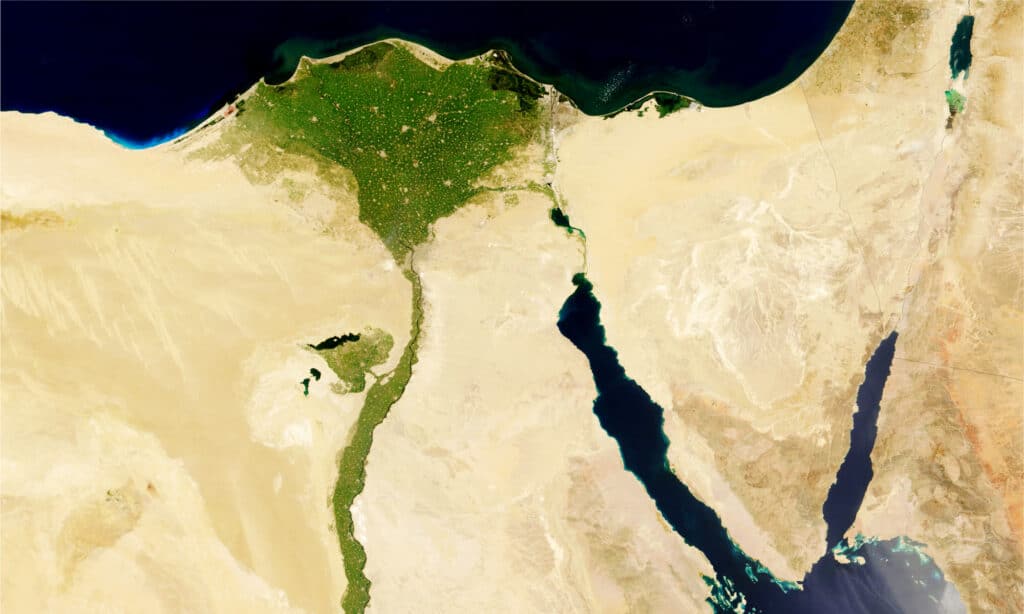
The Nile Delta is an example of a wave-dominated delta.
©SRStudio/Shutterstock.com
A delta is said to be wave-dominated if the size and shape of the delta depends on the movement of waves in the deltaic lobe. For instance, the Nile Delta is heavily influenced by waves from the Mediterranean sea. This is why it is classified as a wave-dominated delta.
Tide-Dominated Deltas
This is a type of delta that typically occurs in an area with high tidal influence (an area in between high and low tide). A common example of a tide-dominated delta is the Ganges-Brahmaputra delta located in India and Bangladesh. The formation of this delta depends on by the rising and falling tides of the Bay of Bengal.
Gilbert Deltas
These types of deltas typically form in areas where rivers empty into a freshwater lake. One major characteristics of this type of delta is the deposition of large and coarse sediments in the deltaic lobe. Unlike the other type of deltas, they’re usually steeper. This means the water continues to flow at a relatively high speed, allowing the deposition of only large sediments instead of alluvium.
Estuarine Deltas
When the rivers flow into the ocean form a new habitat (called an estuary) instead of flowing directly into the ocean, the delta is an estuarine delta. An estuary is a partially enclosed wetland that features both salt and freshwater. The ecosystem supports certain organisms that grow better in this type of water. An example of this type of delta is the delta at the point where the Yellow River flows into the Bohai Sea off the Northern Chinese coast.
Classification of Deltas Based on Shape
Deltas may also be classified based on their eventual shape after formation. Based on this, deltas are classified into six groups:
Arcuate Delta (Arc-Like Deltas)
The traditional shape of a delta is triangular. This is where the name delta comes from which is the upper-case Greek letter delta (Δ). When a delta is shaped like this, it is referred to as an arcuate delta. The Nile River forms an Arcuate delta at the point where it flows into the Mediterranean.
Cuspate Delta (Tooth-Shaped)
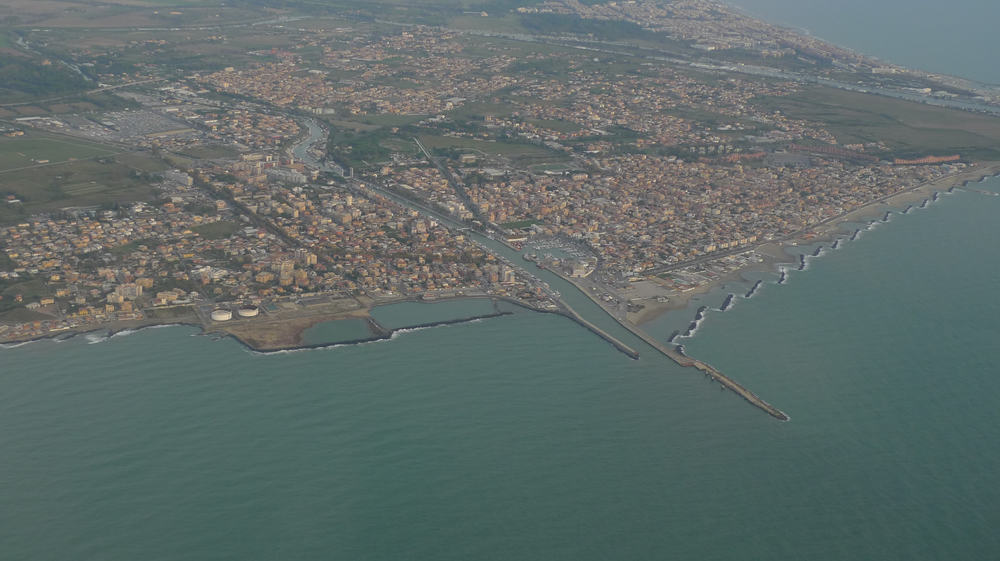
Tiber river delta where it meets the Tyrrhenian Sea in Rome, Italy.
©Fanouria/Shutterstock.com
A cuspate delta typically occur in areas that see strong waves from the ocean. It is similar to the arcuate delta. However, in this case, the mouth of the delta is more pointed, giving it a kind of tooth shape. An example is the delta at the point where the Tiber River flows into the Tyrrhenian Sea near Rome, Italy.
Bird-Foot Delta
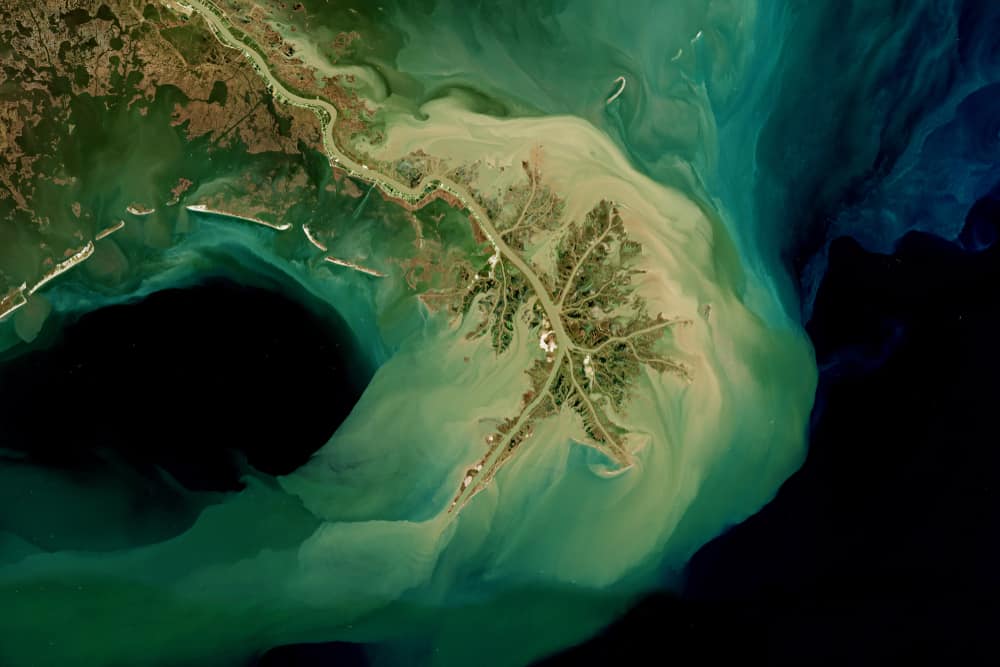
Delta of the Mississippi River in Louisiana seen from space.
©lavizzara/Shutterstock.com
A bird foot delta features several widely spaced distributaries that flow into the larger body of water. This gives the delta the appearance of a bird-foot, hence the name. The Mississippi River forms a bird-foot at the point where it flows into the Gulf of Mexico.
Inverted Delta
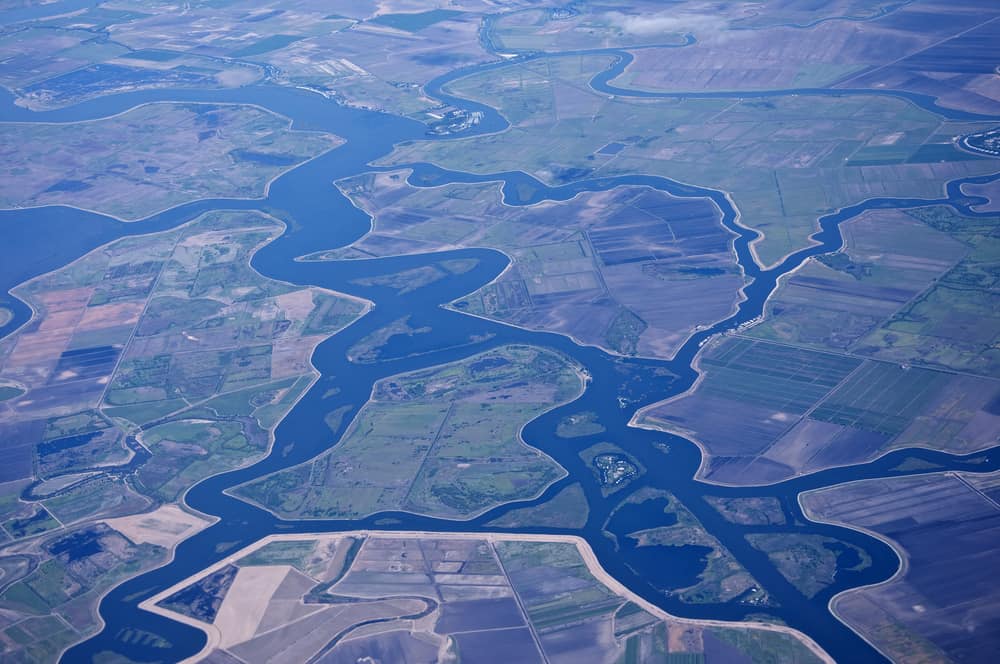
An aerial view of the Sacramento – San Joaquin River Delta, California, USA .
©Jeffrey T. Kreulen/Shutterstock.com
When a delta forms a distributary inland before flowing to the other body of water, it typically forms an inverted delta. A real-life example of this is the delta formed by the Sacramento-San Joaquin River in northern California. The river’s distributary networks all meet in Suisun Bay, then they flow as a single channel to the Pacific Ocean.
Inland Deltas
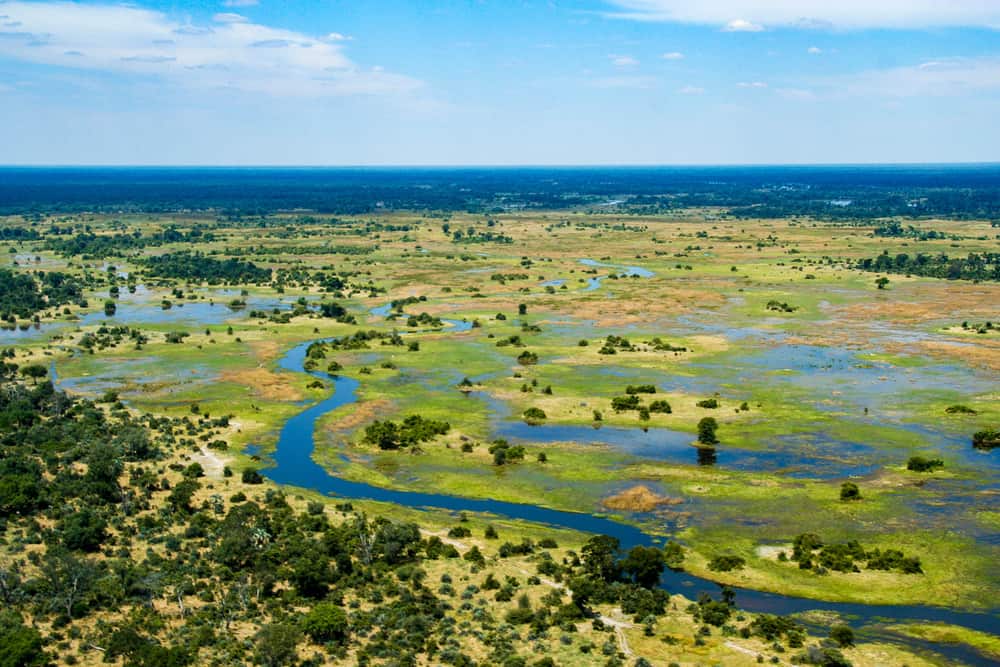
The Okavango Delta, Botswana.
©evenfh/Shutterstock.com
Although it rarely occurs, not all rivers flow into another body of water. The Okavango Delta in Botswana is an example of a river that flows into a flat plain where it empties all its water and sediments.
Abandoned Delta
This is a type of delta that forms when a river divides up to create a new channel. This leaves an old channel to dry up. This process is also referred to as avulsion and it occurs when sediment buildup occurs but the overall slope of the channel decreases. This allows the river to continue to flow while it also deposit sediments to form a delta. The seven or eight distinct deltaic lobes of the Mississippi River were formed by this type of process.
Conclusion
Deltas are impressive geographical structures with interesting origins. There are different types and categories of deltas. The shape and factors that influence the formation of each one explains their formation and overall significance.
The photo featured at the top of this post is © Lukas Bischoff Photograph/Shutterstock.com
Thank you for reading! Have some feedback for us? Contact the AZ Animals editorial team.







